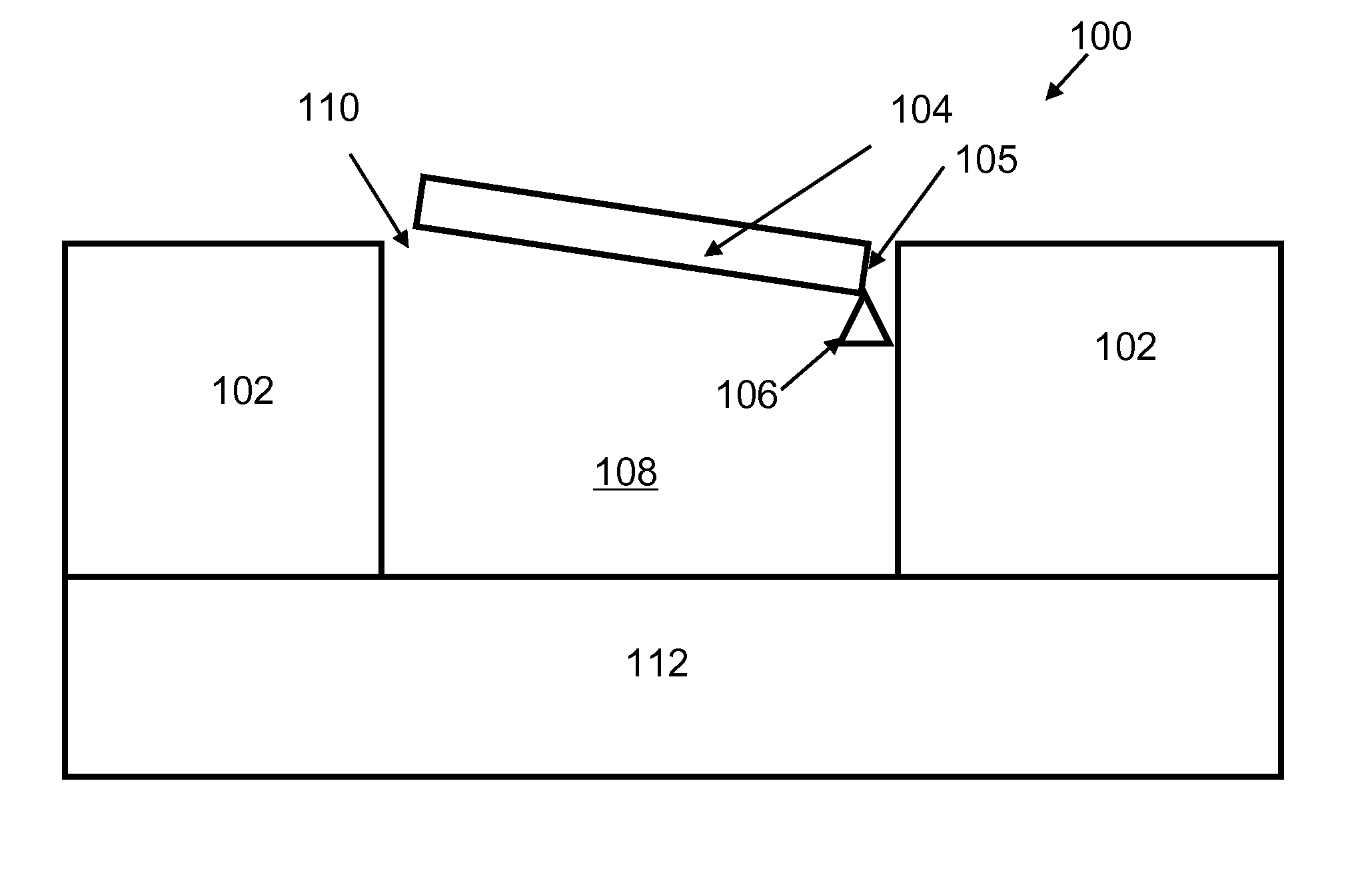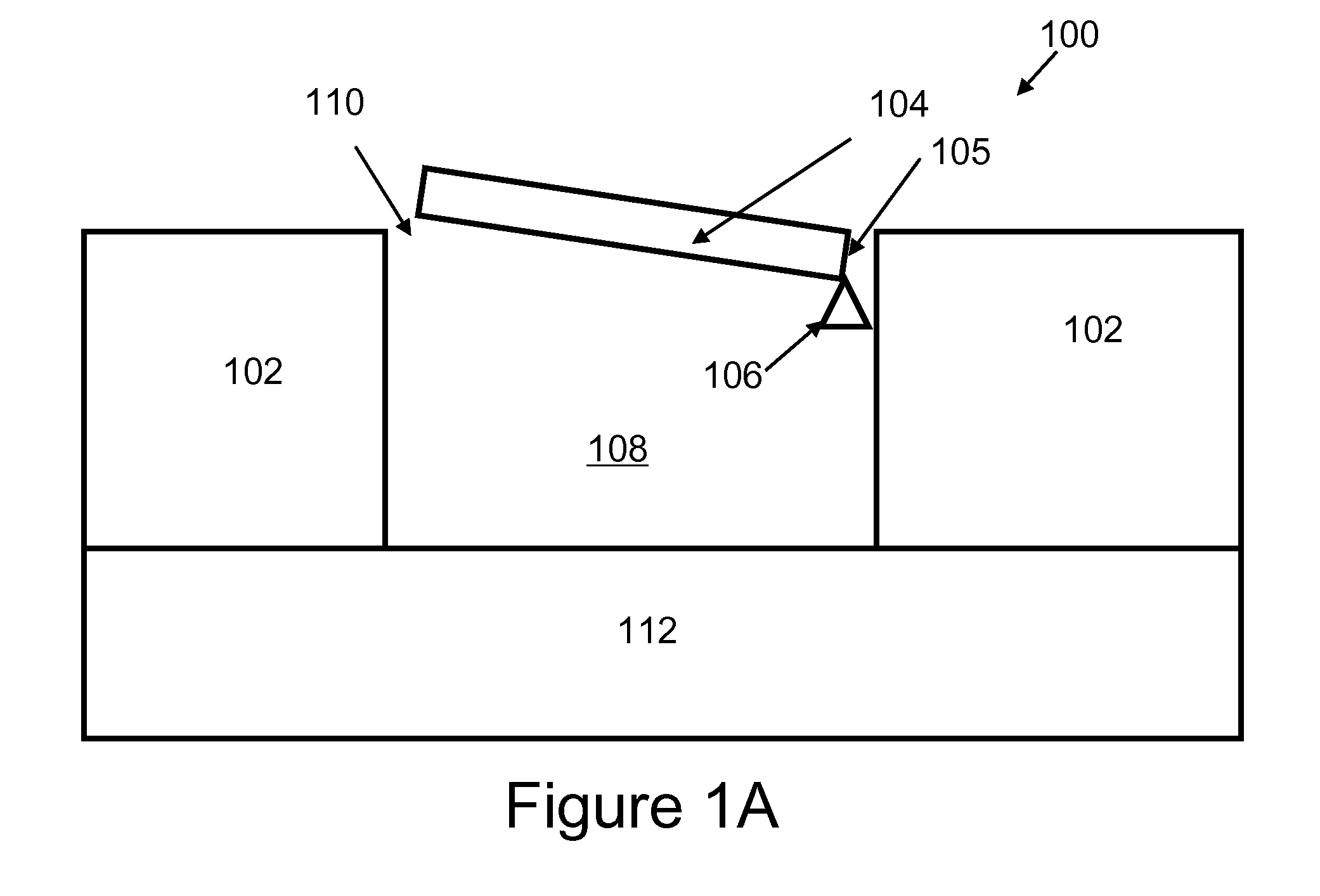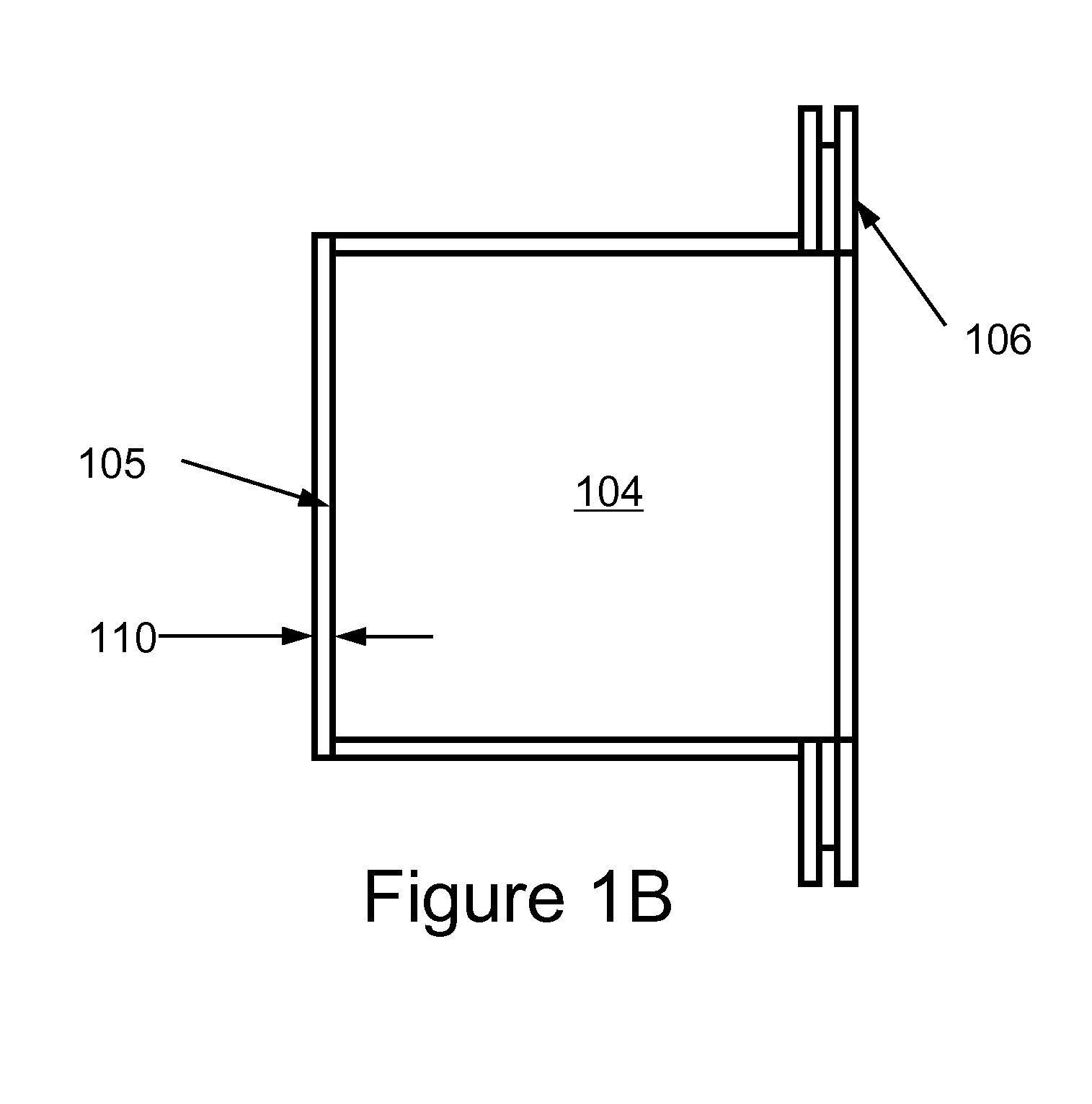Miniature non-directional microphone
a microphone and microphone body technology, applied in the direction of diaphragm construction, solid-state device transducers, electrostatic transducers of semiconductor, etc., can solve the problems of reducing the sensitivity of sound, reducing the sensitivity of low frequencies, and generally adding to the complexity and cost of the device, so as to reduce the tendency to displace the diaphragm, the effect of less stiffness
- Summary
- Abstract
- Description
- Claims
- Application Information
AI Technical Summary
Benefits of technology
Problems solved by technology
Method used
Image
Examples
Embodiment Construction
[0020]The motion of a diaphragm of a typical microphone results in a fluctuation in the net volume (at standardized temperature and pressure) of air in a region behind the diaphragm. The compression and expansion of the air in this region due to the diaphragm's motion results in a linear restoring force that effectively stiffens the diaphragm and reduces its response to sound. This stiffness acts in parallel with the mechanical stiffness of the diaphragm, which, in small microphones and particularly in silicon microphones, is normally much greater than the stiffness of the air in the back volume.
[0021]The present invention permits a diaphragm to be designed such that its mechanical stiffness is much less than that resulting from the compression of air or fluid in the back volume, even though the diaphragm is fabricated out of a very stiff material such as silicon.
[0022]Unlike typical microphone diaphragms that are supported around their entire perimeter, the diaphragm according to a...
PUM
 Login to View More
Login to View More Abstract
Description
Claims
Application Information
 Login to View More
Login to View More - R&D
- Intellectual Property
- Life Sciences
- Materials
- Tech Scout
- Unparalleled Data Quality
- Higher Quality Content
- 60% Fewer Hallucinations
Browse by: Latest US Patents, China's latest patents, Technical Efficacy Thesaurus, Application Domain, Technology Topic, Popular Technical Reports.
© 2025 PatSnap. All rights reserved.Legal|Privacy policy|Modern Slavery Act Transparency Statement|Sitemap|About US| Contact US: help@patsnap.com



